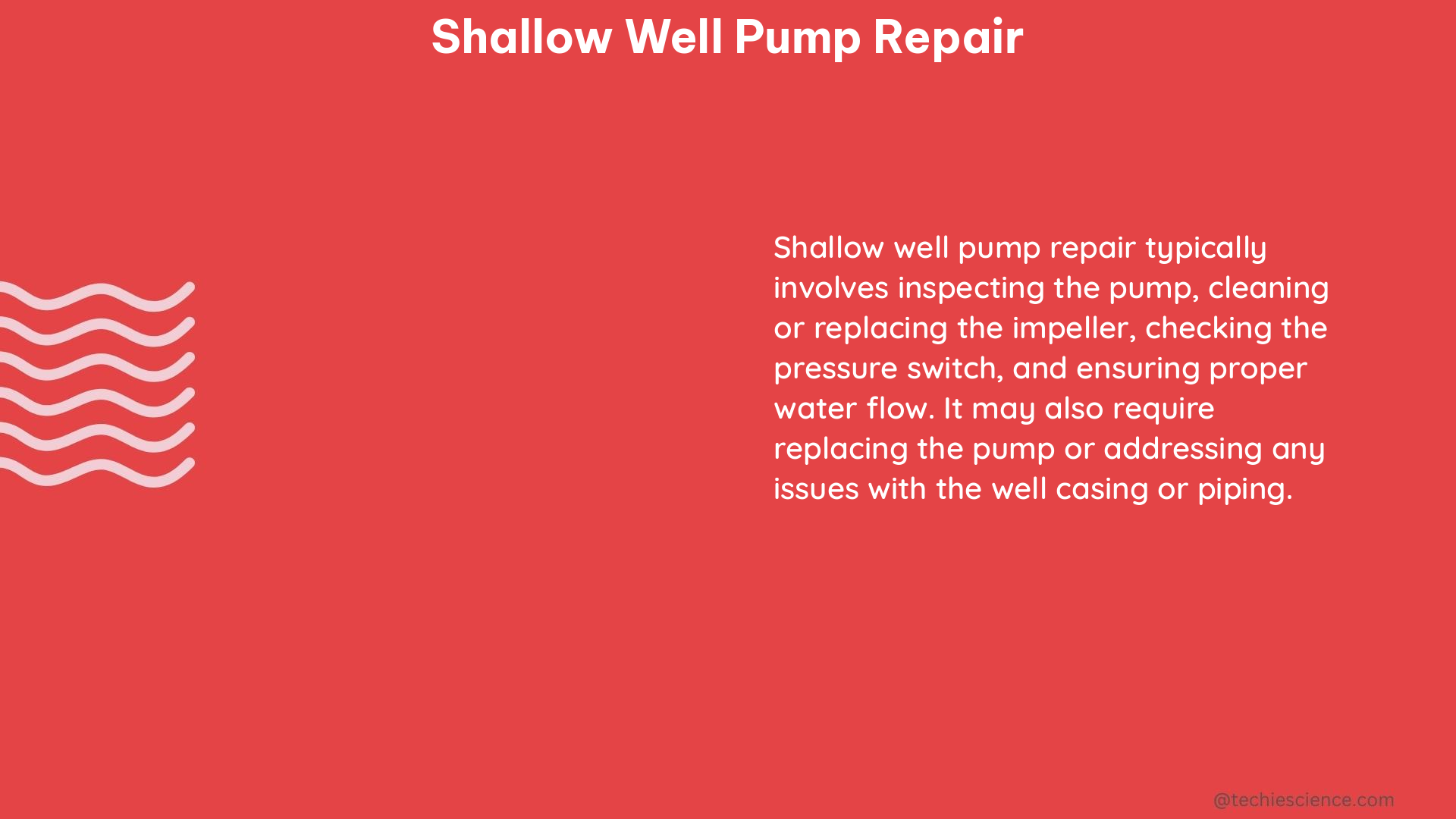Shallow well pumps are essential for drawing water from wells that are typically less than 25 feet deep. These pumps are subject to wear and tear, and repairing them is a common DIY task for homeowners. To successfully repair a shallow well pump, you need to understand its technical specifications, including the pump’s horsepower, voltage, and flow rate.
Understanding Shallow Well Pump Technical Specifications
The technical specifications of a shallow well pump are critical in determining the right replacement parts and ensuring the pump operates efficiently. Let’s dive deeper into the key technical specifications:
Horsepower
The horsepower of a pump determines its capacity to lift water from the well. A pump with higher horsepower can lift water faster and more efficiently than a pump with lower horsepower. For example, a 1/2 HP shallow well pump can lift water from a depth of up to 25 feet, while a 3/4 HP pump can handle depths up to 35 feet.
Voltage
The voltage of a pump determines the amount of electrical power the pump requires to operate. A pump with a higher voltage rating (e.g., 230V) requires more electrical power to operate than a pump with a lower voltage rating (e.g., 115V). Ensuring the replacement pump matches the existing voltage is crucial for proper operation and safety.
Flow Rate
The flow rate of a pump determines the amount of water it can deliver per minute. A pump with a higher flow rate can deliver more water per minute than a pump with a lower flow rate. This specification is essential when considering the water demand of your household or irrigation system. A typical shallow well pump may have a flow rate ranging from 10 to 30 gallons per minute (GPM).
When repairing a shallow well pump, it is vital to ensure that the replacement parts match the pump’s technical specifications to maintain efficient and reliable operation.
Diagnosing and Repairing a Shallow Well Pump

To repair a shallow well pump, you need to follow a specific process that includes diagnosing the problem, identifying the faulty parts, and replacing them. Let’s go through the steps:
Step 1: Diagnose the Problem
The first step in repairing a shallow well pump is to diagnose the problem. This involves:
- Checking the pump’s electrical connections: Ensure the connections are tight and free from damage.
- Testing the pressure switch: Verify that the pressure switch is functioning correctly by checking its continuity with a multimeter.
- Inspecting the pump for visible damage: Look for any cracks, leaks, or other physical issues that may be affecting the pump’s performance.
Step 2: Identify the Faulty Parts
If the problem is not related to the electrical connections or the pressure switch, you’ll need to disassemble the pump and inspect its components. Common faulty parts in a shallow well pump include:
- Impeller: If the impeller is damaged or worn out, it needs to be replaced with a new one that matches the pump’s technical specifications.
- Diffuser: A damaged or worn-out diffuser should be replaced with a new one that matches the pump’s technical specifications.
- Pump Housing: If the pump housing is damaged or worn out, it needs to be replaced with a new one that matches the pump’s technical specifications.
Step 3: Replace the Faulty Parts
When replacing the faulty parts, it’s crucial to ensure that the new parts match the pump’s technical specifications. This involves checking the pump’s horsepower, voltage, and flow rate to ensure compatibility. Using the wrong replacement parts can lead to inefficient operation or premature pump failure.
Here’s a table that outlines the typical technical specifications for shallow well pumps:
| Specification | Range |
|---|---|
| Horsepower | 1/2 HP to 3/4 HP |
| Voltage | 115V or 230V |
| Flow Rate | 10 GPM to 30 GPM |
Remember to always consult the manufacturer’s recommendations or the pump’s nameplate to ensure you’re selecting the correct replacement parts.
By following these steps and ensuring the replacement parts match the pump’s technical specifications, you can successfully repair your shallow well pump and restore reliable water access.
Reference:
- Diagnose and Replace a Submersible Well Pump – Instructables
- Recommended strategy – eventual well pump replacement – Doityourself.com
- Shallow Well Pump – diagnosis and repair – YouTube

The lambdageeks.com Core SME Team is a group of experienced subject matter experts from diverse scientific and technical fields including Physics, Chemistry, Technology,Electronics & Electrical Engineering, Automotive, Mechanical Engineering. Our team collaborates to create high-quality, well-researched articles on a wide range of science and technology topics for the lambdageeks.com website.
All Our Senior SME are having more than 7 Years of experience in the respective fields . They are either Working Industry Professionals or assocaited With different Universities. Refer Our Authors Page to get to know About our Core SMEs.